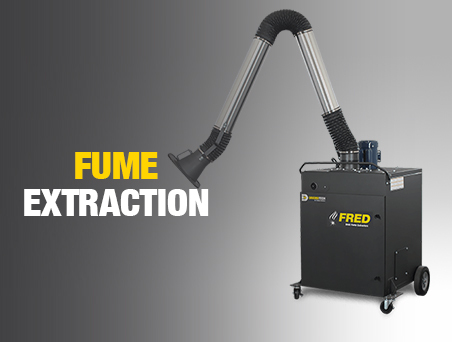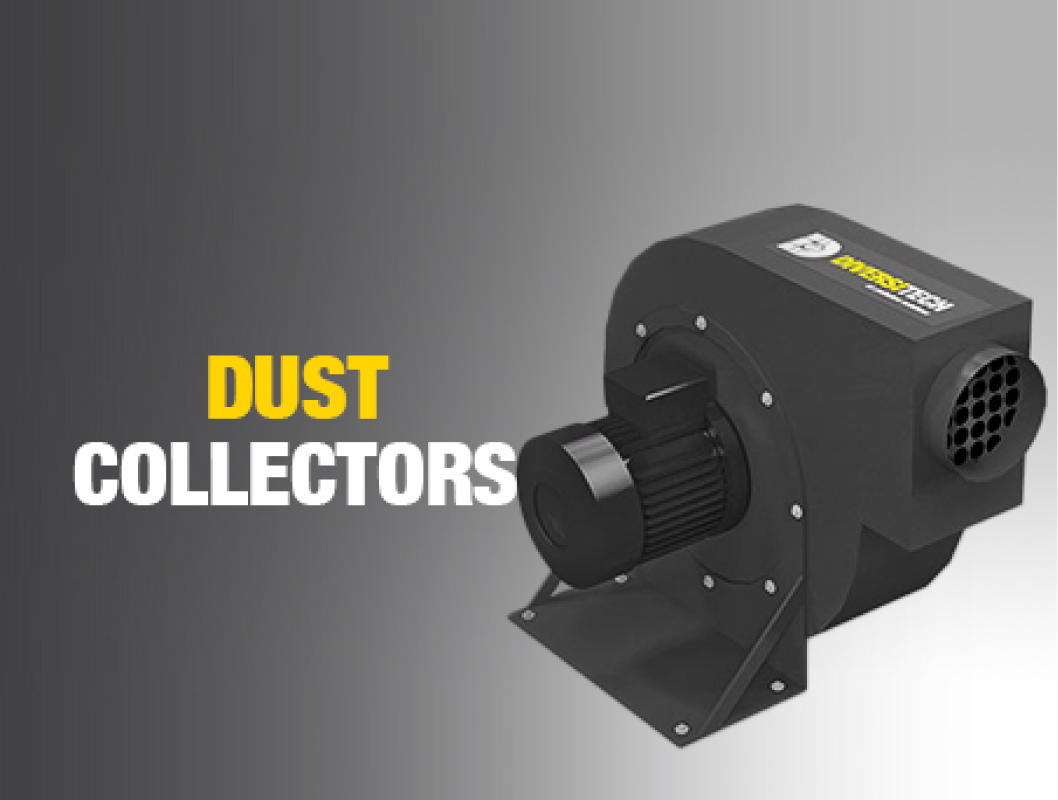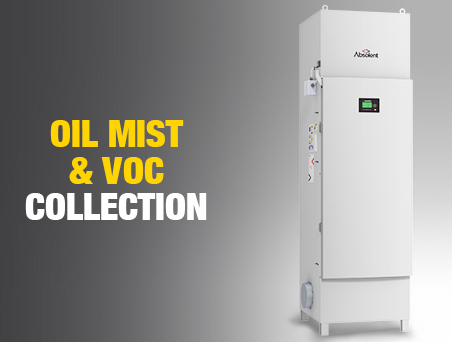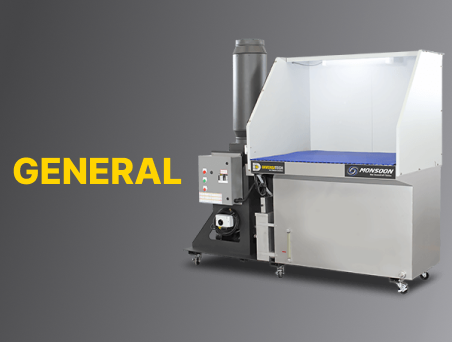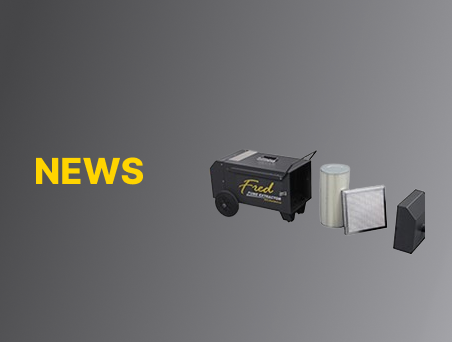Mitigate Particulate Matter with Dust Collection
The phrase ‘particulate matter’, often shortened to just ‘PM’, includes a wide range of airborne particles. In the manufacturing world, PM is an umbrella term used to describe microscopic particles which are generated as a result of common manufacturing processes. There are two types of particulate matter: PM10, which are particles smaller than 10µm, and PM2.5, which are smaller than 2.5µm. The finer PM particles are small enough to actually be inhaled, making them an alarming health hazard.
In manufacturing, processes like grinding, deburring, sanding, and other finishing operations can produce inhalable PM. The particles produced in these processes come from not just the workpiece, but also the finishing tool. For example, in sanding operations PM from both the workpiece and the sanding medium will become airborne as they both lose particles to abrasion. These inhalable particles are known to settle in the lungs when breathed in. Over time this can lead to significant PM buildup in the body, which negatively impacts the lungs’ ability to absorb oxygen. This buildup results in symptoms that can vary wildly in severity, from mild irritation to chronic lung issues. For a more in-depth look at PM and its effects, check out our previous blog post where we discuss all things related to particulate matter.
Although there are significant risks to working around PM, Diversitech has multiple solutions tailored to help you mitigate those risks and keep your people safe.
Downdraft tables are designed to capture air pollutants of all kinds, right at the source. For dust collection in particular, we recommend our WGD configuration. These tables are optimized for dust capture in welding, grinding, and deburring operations. They feature walls to keep PM from leaving the work area and our nanotech filter to capture PM at the sub-micron level.
For an ambient dust capture solution, our line of Filterhawk cartridge dust collectors is the way to go. These collectors feature a reverse pulse cleaning system, so they can deliver maximum performance with minimal maintenance.
Your air pollution issues won’t fix themselves. Don’t hold your breath- contact Diversitech today to get started!
Protect Man & Machine with Oil Mist Collection Measures
A lesser-known health risk produced by manufacturing activities is a byproduct called oil mist. Oil mist is generated by processes where oil-based solvents and lubricants are used. Some common manufacturing processes that are known to create oil mist are CNC milling, machining, and metalworking.
Oil mist can enter the body through inhalation, ingestion, or through skin contact- which makes it that much more crucial to manage properly. When left unchecked, oil mist fumes can lead to acute symptoms like burning sensations, fever, and increased heartbeat. More long term exposure can result in serious chronic health issues like bronchitis, contact dermatitis, or even cancer.
Unlike particulate matter and smoke, oil mist can create hazards beyond just respiratory threats. A buildup of oil can damage sensitive machinery, resulting in costly downtime, repairs, and machine replacements. Fine oil mist can also create slip and fall hazards in the workplace; and since residue can be difficult to detect if you’re not looking out for it, accidents are bound to happen.
To properly address oil mist, effective air ventilation and filtration are imperative.
Diversitech has an entire range of filtration systems dedicated to collecting oil mist from process air. Some collectors can be positioned at individual workstations to filter out oil mist at the source, while others serve as central units to filter process air from multiple stations simultaneously. Our oil mist capture systems employ a 3 step process, which filter out airborne particles down to an astounding size of 0.3µm. The collected oil is then deposited at the bottom of the filtration system, so that you can see for yourself just how effective our filtration is. You can even recycle the process oil that’s been collected.
Table of Contents:
Fume Extraction Reduces Health Risks from Process Smoke
Closely related to both oil mist and particulate matter is process smoke, or fumes. Process smoke can arise from any manufacturing process that generates friction, high heat, burning, or any combination of the 3. Practically any manufacturing operation can generate fumes- welding, grinding, laser cutting, soldering, machining, metal forming- the list goes on. If you’re engaging in any level of industrial activity, process smoke is a respiratory hazard that you definitely need to look out for.
Duration of exposure, content of the smoke, supplemental materials, and the tools used in a process are all important factors when assessing the risk of fume exposure in any manufacturing operation.
Since fumes and process smoke can be comprised of so many different types of metals and chemicals, its adverse effects are categorized very broadly. As with the other respiratory hazards we’ve already covered, both acute and chronic symptoms can present themselves depending on the duration of exposure and composition of the smoke. Chronic symptoms from long-term fume exposure are the most dire of what we’ve discussed today: hexavalent chromium which is present in welding fumes can cause nasal and lung cancer; other welding fumes can cause conditions like asthma, pneumonia, and pulmonary fibrosis.
To reduce the risks associated with process smoke, capture at source technology is the most effective solution you can employ. For tabletop operations, Diversitech recommends downdraft tables. These tables come in a variety of sizes with specially tailored filtration packages to best suit the fumes generated by different processes. Some of these packages include our WGD package, a plasma cutting package, and a clean air package. Our team can help connect you with the appropriate filtration solution to address your particular concerns.
For more large-scale processes where a tabletop work surface is not ideal, we have our line of FRED fume extractors. These fume extractors are incredibly versatile, making them well-suited to capture fumes from any manufacturing operation. Each model is equipped with an articulated capture arm which can be positioned directly toward the fume source to maximize effectiveness. More advanced models feature a self-cleaning system and a blower motor with twice as much power for increased efficiency. Choose a portable model to capture fumes anywhere on your shop floor, or select a wall-mounted model if you’d like to dedicate a FRED extractor to a single workstation.
You can breathe a sigh of relief knowing that Diversitech has your back. If you’re ready to improve your shop’s air quality, contact us today to get started.
Related Products
Erity Oil Mist

FRED SR
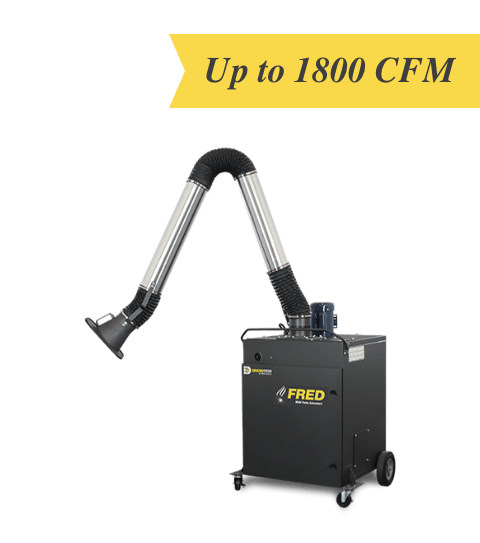
Monsoon 3' X 4'

TYPHOON WX


